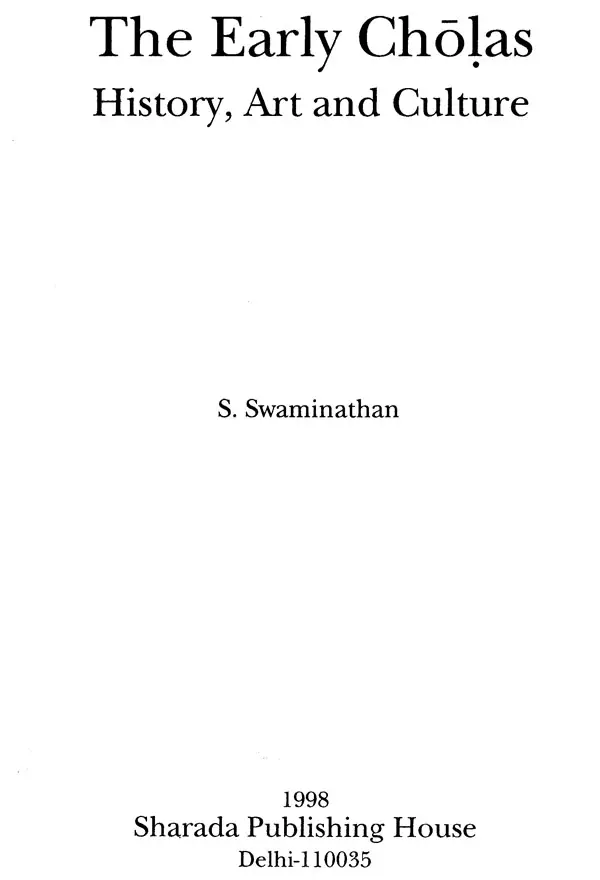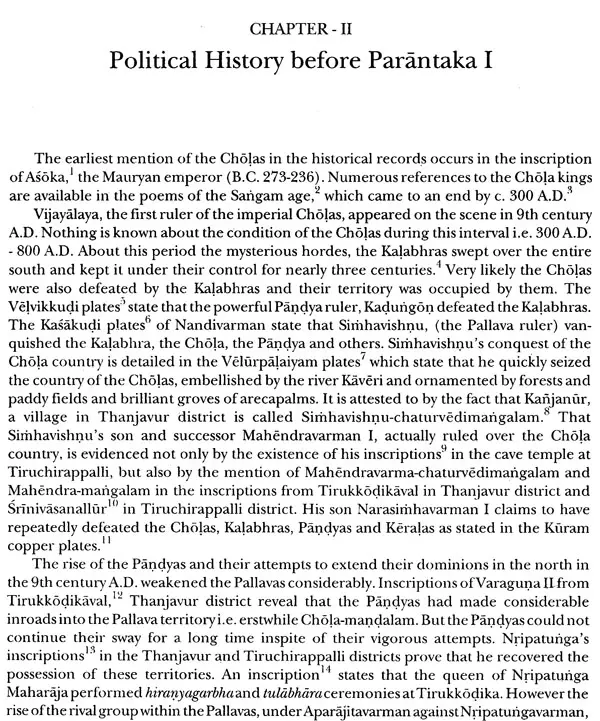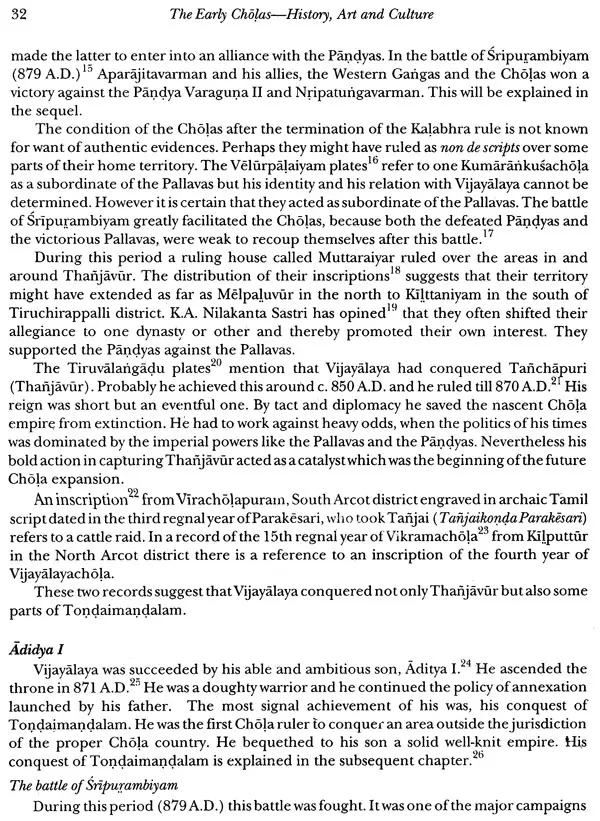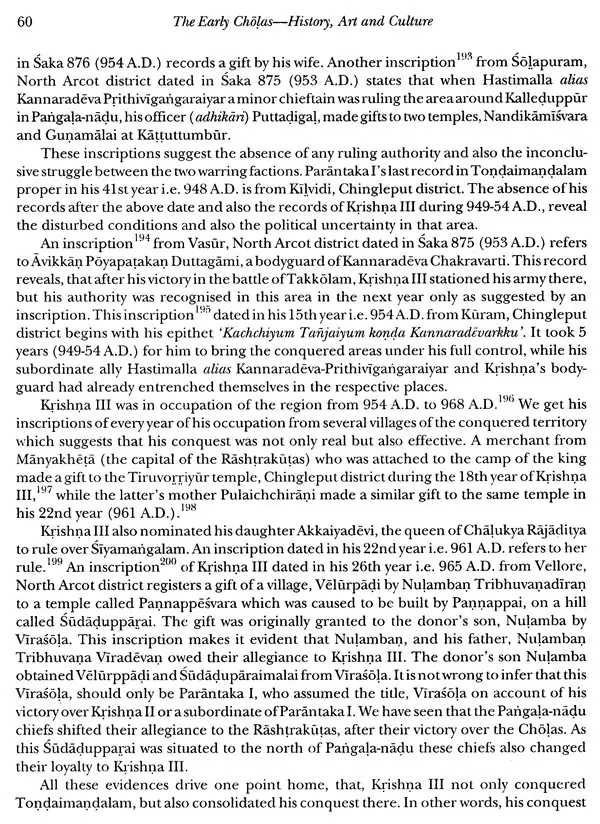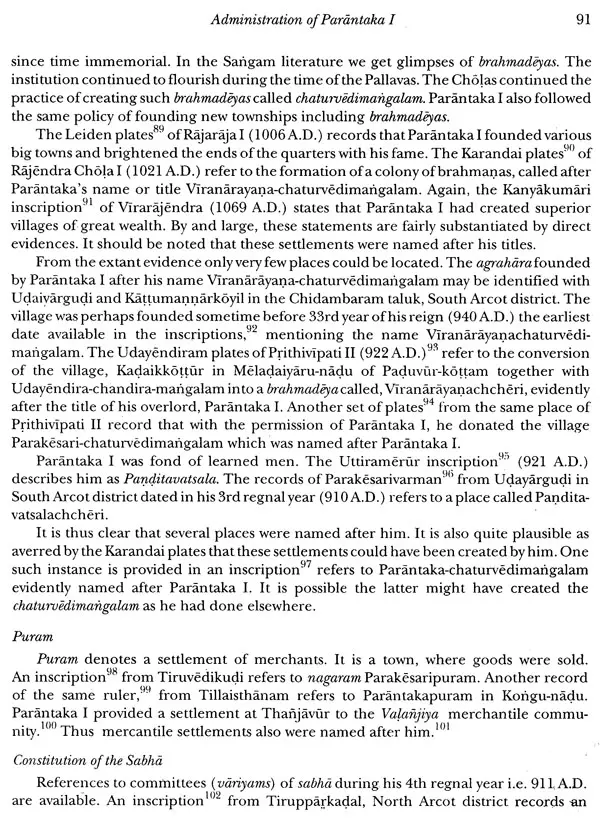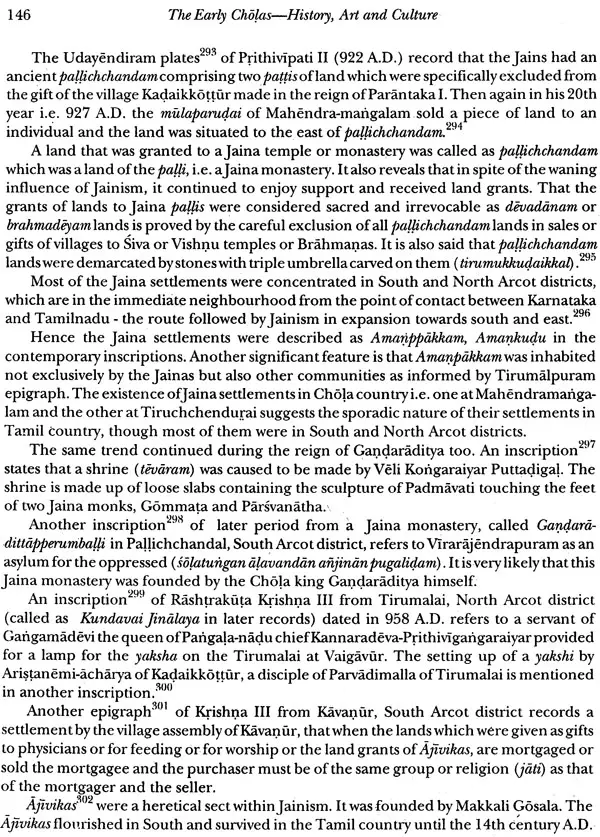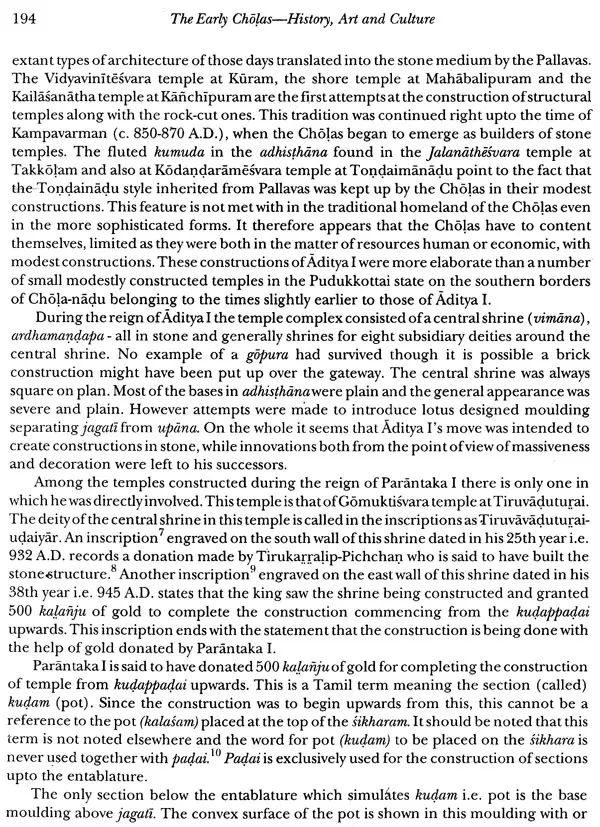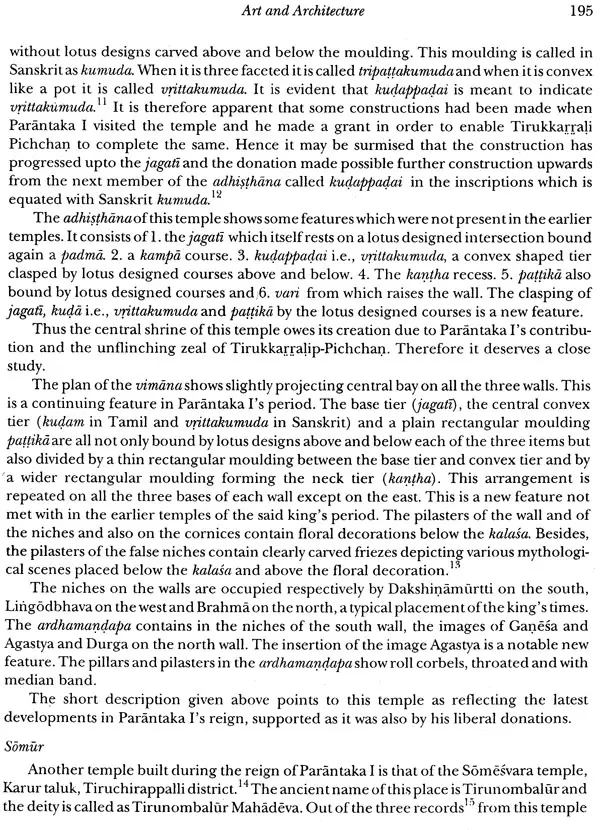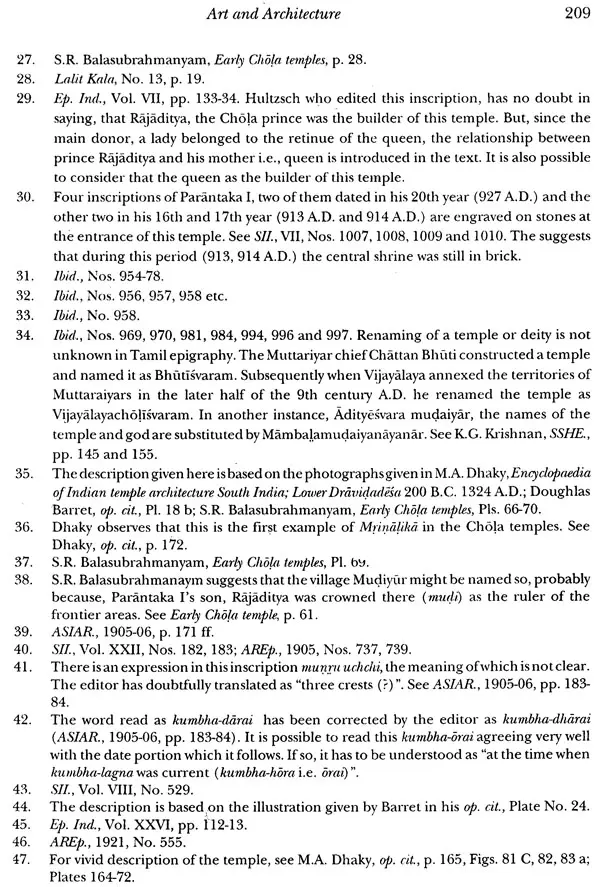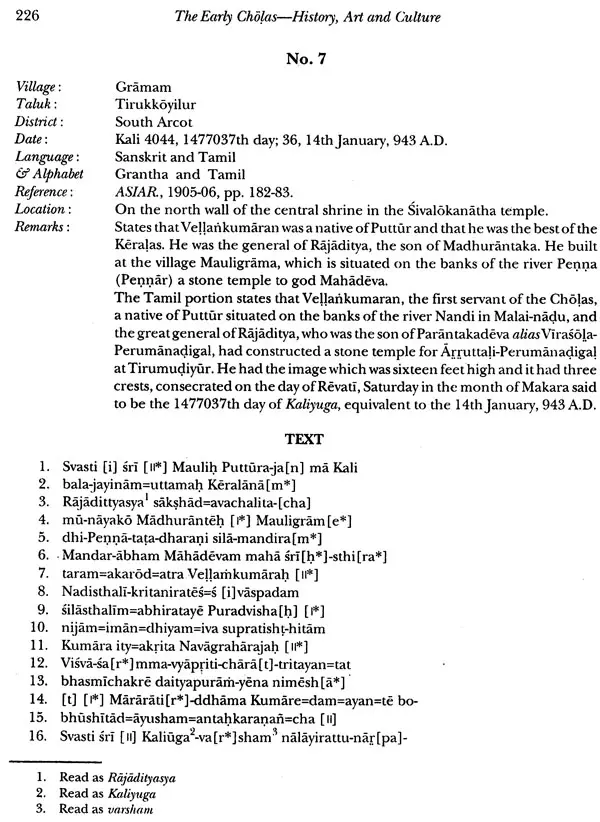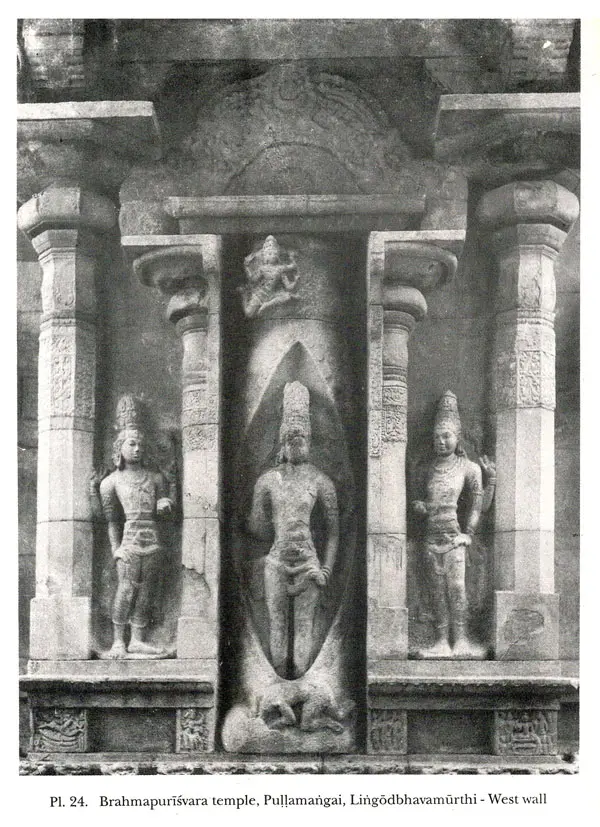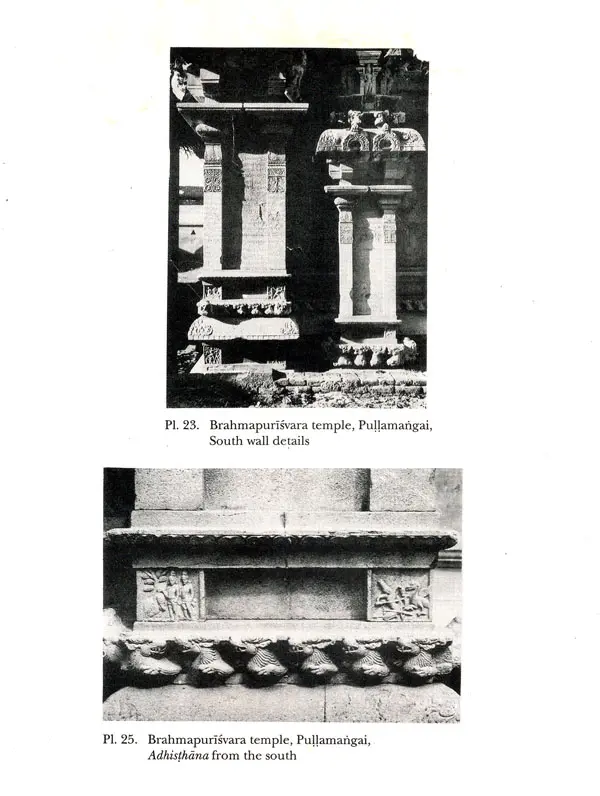
The Early Cholas History, Art and Culture
Book Specification
| Item Code: | UAF811 |
| Author: | S. Swaminathan |
| Publisher: | Sharada Publishing House, Delhi |
| Language: | English |
| Edition: | 1998 |
| ISBN: | 8185616493 |
| Pages: | 240 (26 B/W Illustrations) |
| Cover: | HARDCOVER |
| Other Details | 10.00 X 7.50 inch |
| Weight | 830 gm |
Book Description
The early Cholas are best remembered for their signal contribution in the sphere of local administration. The rules. relating to the mode of local administration best averred in the celebrated Uttiramerur inscriptions were conceived during the reign of Parantaka Chola I. The early Cholas also left their imprints on art, architecture and sculpture.
He also serves as an editor of the Journal of the Place-Name Society of India and Assistant Secretary of the Epigraphical Society of India. Presently he is engaged in editing the inscriptions copied in 1912 under South Indian Inscription Volume series.
The pattern of political progress of a particular dynasty follows a uniform graph of small or humble beginnings then a meteoric rise to grandeur and sudden or gradual downfall. Each stage was influenced by the personality of the then ruler / rulers of that dynasty, his neighbouring contemporaries and the circumstances, natural and man-made. It is usual to have one of the rulers who shaped the middle period as the greatest among them. But it is found that such a one was only a culminating point and his predecessors had contributed a great deal to the strengthening of the kingdom and the basis for his achievements. An Alexander would probably not have been possible without a Phillip of Macedonia.
Chola Parantaka I belonged to the first stage in the glorious history of the Cholas. His achievements were not confined to the political field but also to the other fields, social, economic, etc. The Uttiramerur inscription concerning the laying down of the organisational framework of the Sabha of that place shows his solid contribution to the well-known administrative efficiency of the Cholas. So a full-scale study of the progress of his reign is essential to understand the development of the Chola institutions. The study presented here by Dr. S. Swaminathan is very significant contribution for understanding the Chola history. I wholeheartedly commend it to the scholars and even to the lay readers.
The present work embodies the result of my research on this great Chola king, carried out by me from 1984-87 and submitted to the Mysore University in 1987 for Ph.D. degree. I have taken up the above topic primarily because as already stated the period of Parantaka I is an important epoch witnessing many historical developments of far reaching consequences. The availability of large number of inscriptions of his period and my abiding interest on the history of the Cholas are other reasons.
The book is divided into eight chapters. The first chapter deals with the sources that are useful for this study. Inscriptions, their contents, provenance of inscriptions and their general nature are analysed in this chapter. The limitations of sources are also pointed out.
The next chapter deals with the political history before Parantaka I. An outline of the history from Vijayalaya to Aditya I is traced here to give a background to perceive the political development of Parantaka I's period.
The third chapter discusses the campaigns of Parantaka I. His annexation of Tondai mandalam, and his invasion of the Bana country, Madurai and Ceylon are dealt with. The Chola-Rashtrakata relation, battle of Takkolam (949 A.D.) and the consequences of the battle are also analysed. A map is also appended here to highlight Parantaka I's campaigns and the territories he captured in various places. His feudatories and their role in this period is also brought out in this chapter.
Political developments after Parantaka I are traced in the fourth chapter. The disaster at the Takkolam battle struck the Cholas. The efforts made by Sundarachola to retrieve the lost glory of the Cholas is traced here. A brief sketch of the Rashtrakata occupation in Tondai-mandalam is also studied. Taking advantage of the difficulties of the Cholas in the north much of the south under Vim. Pandya slipped out of the hands of the Cholas. The Cholas had to undertake fresh campaigns to recover the lost Pandi-mandalam. Fifth chapter is devoted to a study of the administration of Parantaka I. The powers of the hierarchy from the king down to the local assemblies are discussed. The two celebrated Uttiramerur inscriptions, their contents and the improvement that was effected in the second one are pointed out. The various assemblies and their functions are also analysed. The impact of the Rashtrakata invasion on the sphere of administration is also studied here.
His long reign of forty-eight years ushered in a new era of economic prosperity. Reclamation of large areas of land on the Kaveri region boosted agricultural development, which led to all round prosperity. As almost the whole of the first half of the tenth century A.D. was occupied by his rule which extended over nearly the entire Tamil Nadu as well as over a part of Andhra Pradesh too, the results of the above mentioned activities apparently possess more or less uniform characteristics irrespective of the differences of localities. In the words of K.A. Nilkanth Sastri4 "In fact Parantaka I's reign was a great epoch in the history of South Indian temple architecture, and the work of temple building begun by Aditya I was continued vigorously during the best part of his reign".
Book's Contents and Sample Pages
